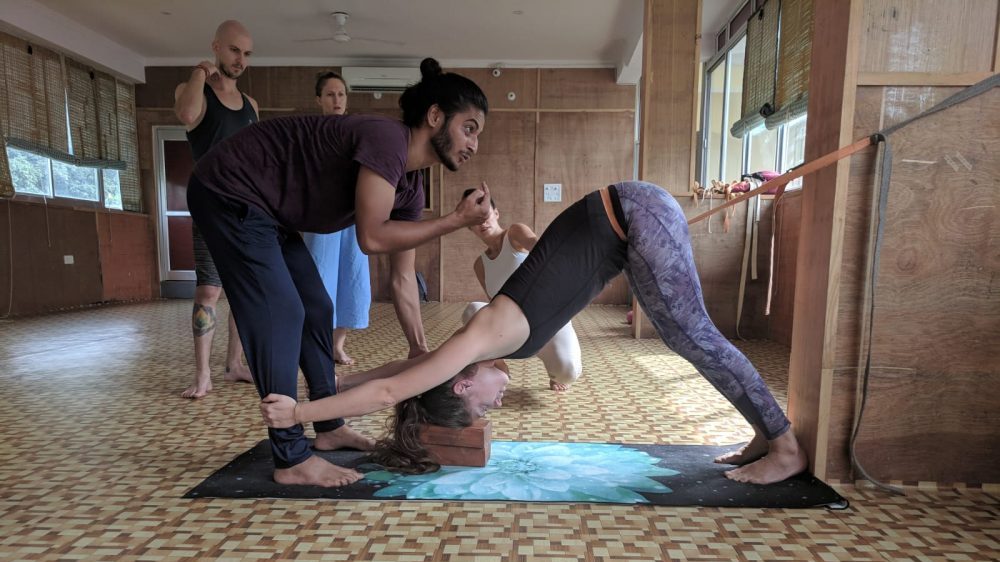So, you want to do your yoga teacher training and curious how to choose best yoga teacher training course for you? That is awesome! In my opinion, doing a yoga teacher training program, even if you never intend to teach a day in your life, is one of the most amazing, life-transforming things you can do for yourself.
That said, with so many options for trainings out there, how do you even begin to decide which program is right for you? How do you know if the one you are going to be investing a few thousand dollars and at least 200 hours of your time into is going to pay off for you?
If you are feeling confused about your options, this post is for you. I have created this checklist of considerations to help you narrow down your search for programs that best suit you and your life.
1. Make Sure Your Training is Yoga Alliance-Certified:
As the international governing body for yoga, the Yoga Alliance has set the standard for what a properly constructed teacher training program must contain.
If you hope to teach yoga at some point in your future, you want to ensure that the training you choose is Certified by the Yoga Alliance; otherwise, you will not qualify for insurance.
I know it does not feel all that yogic, but insurance is a part of the world we live in, and an important point to keep in mind while you are program shopping.
I am not saying that taking a training that is non-Yoga Alliance certified is a mistake—there is a plethora of good non-accredited trainings out there—just know that your chances of teaching and teaching safely may be diminished if you disregard this credential in your decision.

2. Choose Hours That Work for Your Life:
For some, totally checking out of their everyday life and going on a retreat-style yoga teacher training is far more effective for learning. For others, doing their training in their hometown on evenings and weekends works best.
You have to think this through before signing up for anything. If you know that life is going to distract you from your studies, you are most likely better off getting out and away.
If you know that you need time to go away and digest concepts, perhaps doing your teacher training course over a longer period of time, with breaks in between sessions, will serve you better.
Take into account how you learn, and how much life is going to serve as a distraction from your learning. From there, you will have a better idea on what kind of training will serve you best.
3. Look into How They Teach Anatomy:
This is a big one. Make sure that your yoga teacher training program has a strong anatomy section. I would even suggest that you do some research on what the instructor of the program you are looking into has to teach that section.
Anatomy may not seem like the biggest deal when you are in the middle of trying to memorize all the Sanskrit names for postures or figuring out how to sequence properly.
Still, a solid understanding of human anatomy will not only transform your own practice into one that is ideal for your specific body, it will also enable you to bring so much more consciousness to your teaching in public and private classes.
Knowing your anatomy is going to pay off big time in the long run, so make sure it is really emphasized in your program.
4. Study the Program’s History:
Do some research into the history of the company with whom you are considering doing your training.
There are some companies that have been around forever, doing teacher trainings for years, and that have extensive experience delivering very strong programs.
It is not all that difficult to put a teacher training program together, however, and just because a program is certified by the Yoga Alliance, does not mean it is top quality.
Unless you have a ‘home’ studio that you know and trust through which you are doing your training, do a thorough background check on the company. Read reviews, talk to people who have been through the program, and get very familiar with your studio of choice.
5. Evaluate the Course Syllabus for Balance of Subjects Taught:
This is my favorite tip—each Yoga TTC is required a minimum number of hours dedicated to things like posture labs, anatomy, history, and philosophy—but each teacher training is going to emphasize different areas, and bring their own style to their program.
If you are really into the nuts and bolts of yoga asana, then a spiritually-focused program most likely isn’t for you. Likewise, if discussing the Yoga Sutras at length turns you on, then a super anatomy-focused program may make you feel less than interested.
Study the curriculum and ask about how many hours are dedicated to each topic if it is not advertised. Pick a program that speaks your language.
6. Do Research on The Instructors:
Lastly, check up on the teacher trainers with whom you are thinking of studying. Look at how long they have been teaching, how long they have been doing teacher training, and even at who trained them. This information is useful for deciding if you want to work with them or not.
I am not saying not to do your training with a teacher that does not have thousands of years of teacher experience—some of the best teachers I have ever worked with have been relatively new—I am simply suggesting you get an idea and feel for your instructors.
Take some public classes with the teachers who will be on your teacher training faculty as well. Make sure you enjoy their teaching style and connect with them.
So what do you think? Do any of these tips make choosing your program seem less overwhelming? If you have done your training, is there anything you would add to this list?


